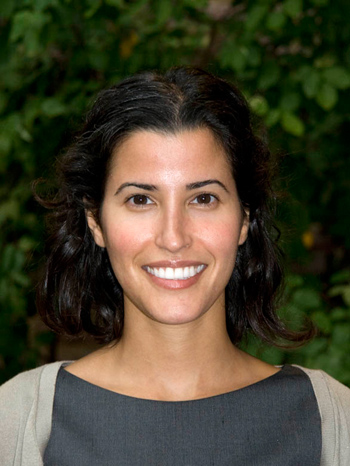New Method Makes Culture of Complex Tissue Possible in any Lab
By:
- Debra Kain
Published Date
By:
- Debra Kain
Share This:
Article Content

Adah Almutairi, PhD
Scientists at the University of California, San Diego have developed a new method for making scaffolds for culturing tissue in three-dimensional arrangements that mimic those in the body. This advance, published online in the journal Advanced Materials, allows the production of tissue culture scaffolds containing multiple structurally and chemically distinct layers using common laboratory reagents and materials.
According to the UC San Diego researchers, this process is more affordable and widely feasible than previous methods that required expensive equipment and expertise.
The new approach is remarkably simple: solutions of the components of each layer, including polymers, are mixed with varying concentrations of a common inert reagent to control density. The solutions are layered so that the difference in density segregates each solution, and then polymerized so that they form a gel. The structure of each layer can be altered by varying the concentration of polymers, and the discreteness of the transition between layers can be altered by allowing the solutions to diffuse.
Lead author Jerome Karpiak, graduate student in the UCSD Biomedical Sciences Program, said, “We’re excited about the relevance of this method to tissue engineering. Since it offers such straightforward spatial control over structure and composition of stratified tissue scaffolds, including cell type and density, this technology could help the field move much faster.” Tissues cultured in vitro to mimic those in the body can potentially provide an alternative to transplantation for injured or degenerated tissue.
“We believe this approach will vastly broaden the number of labs capable of culturing complex tissue,” said Adah Almutairi, PhD, assistant professor at the UCSD Skaggs School of Pharmacy and Pharmaceutical Sciences, the Department of Nanoengineering and the Materials Science and Engineering Program at the UCSD Jacobs School of Engineering. “Because manipulation of structure and concentrations of signal molecules is much easier in this system than in intact organisms, it holds great potential to advance the study of development and disease.” For example, this method may offer a novel approach to study how surrounding molecules affect the growth of axons in neurodevelopmental disorders.
Additional researchers included Yogesh Ner, PhD. Research was funded in part by the National Institutes of Health Director’s New Innovator program and King Abdulaziz City of Science and Technology.
Share This:
You May Also Like
Stay in the Know
Keep up with all the latest from UC San Diego. Subscribe to the newsletter today.



